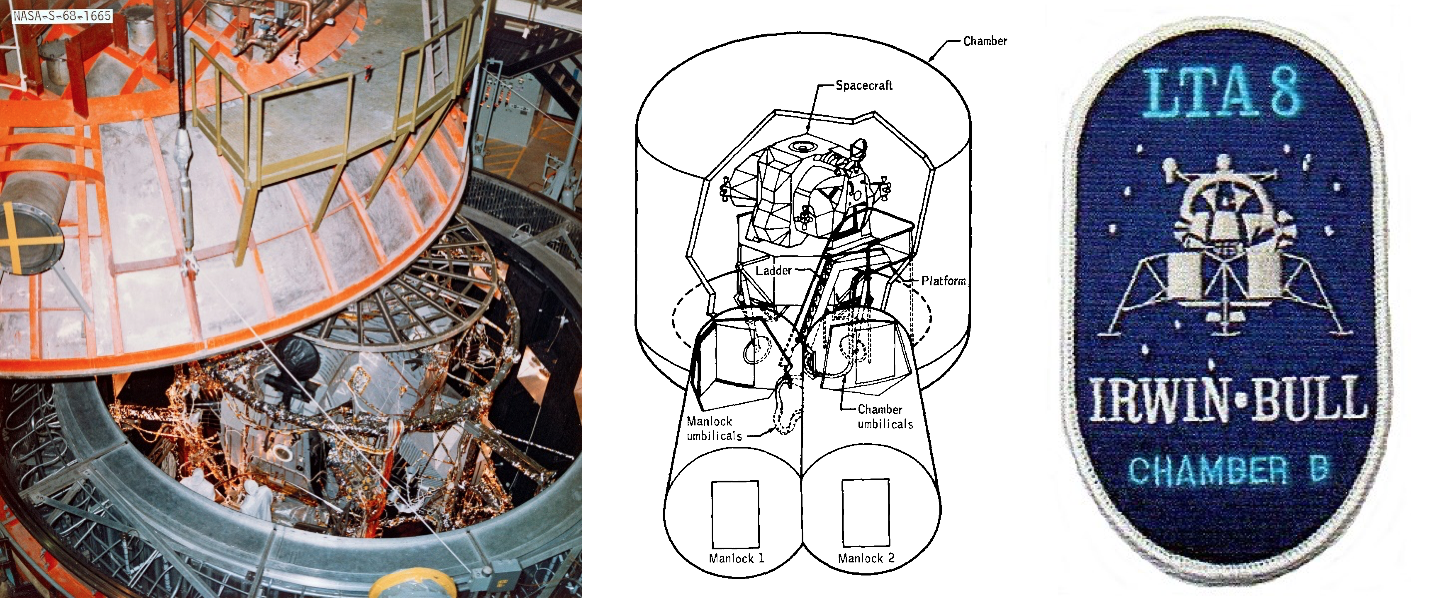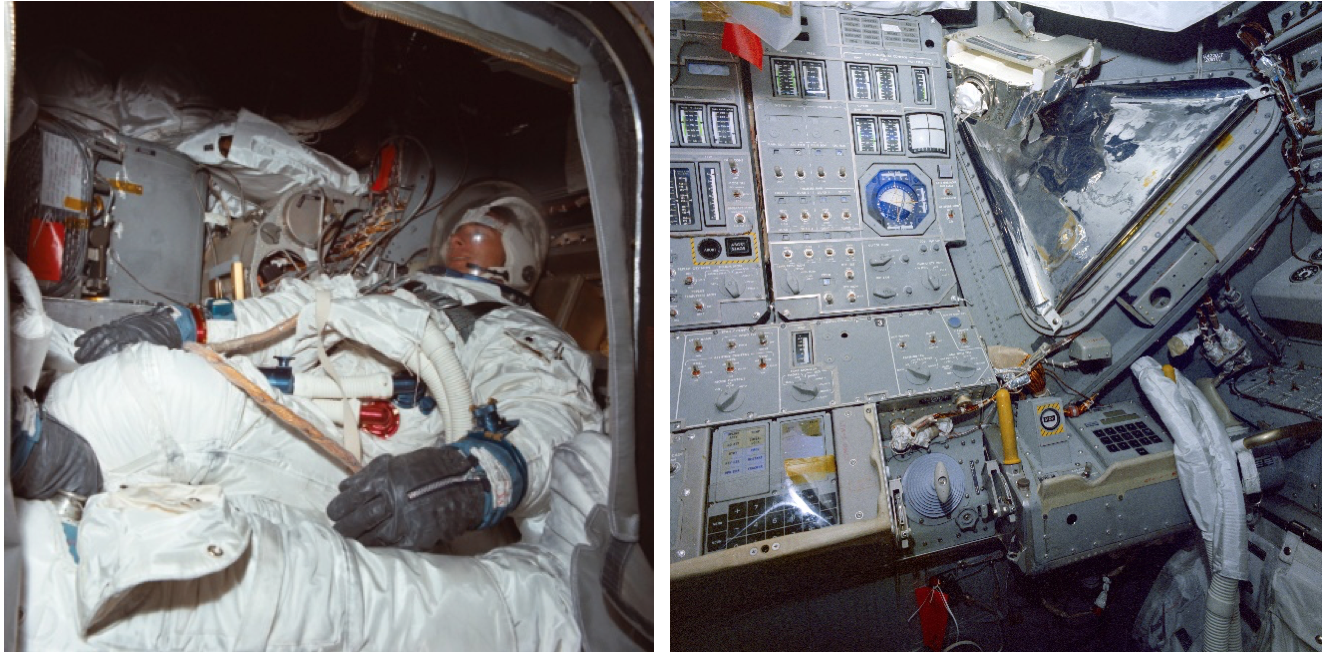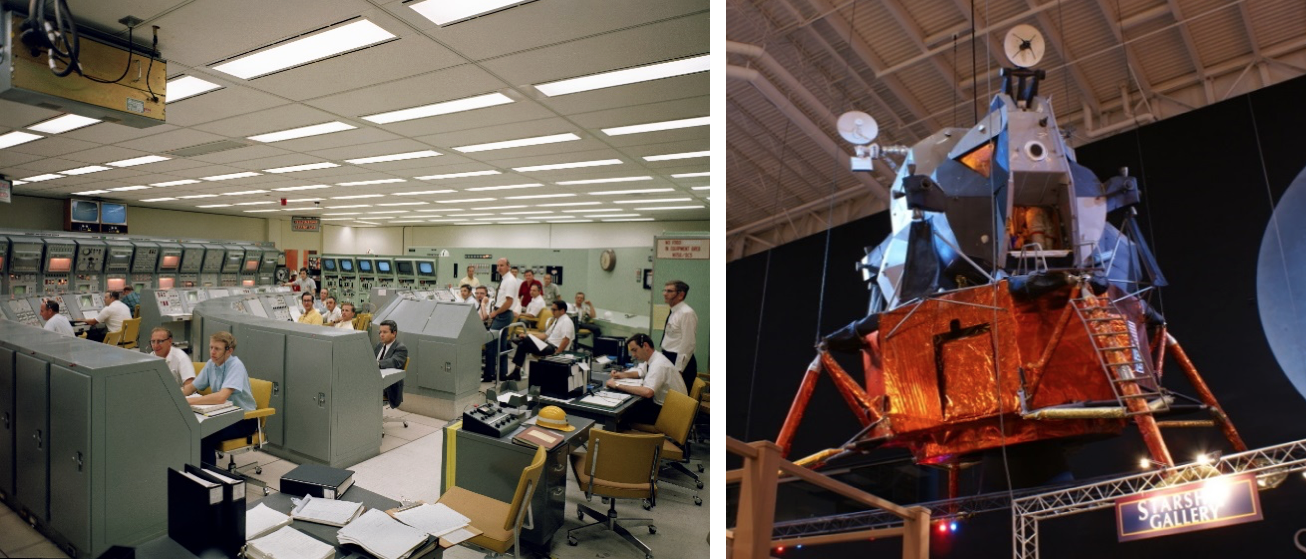In the late spring of 1968, NASA conducted two critical tests at the Manned Spacecraft Center (MSC) in Houston to certify components of the Apollo spacecraft for human space flight. These thermo-vacuum tests, conducted in the Space Environment Simulation Laboratory (SESL), verified the space-worthiness of the Command and Service Module (CSM) and the Lunar Module (LM). Successful completion of both tests were required before the first manned flight of each vehicle – Apollo 7 in the case of the CSM and (at the time) Apollo 8 for the LM.
Completed in 1965, the SESL houses two chambers for thermo-vacuum testing. Chamber A is the larger of the two chambers and tested the CSM in June 1968. Chamber B is a 35-foot diameter stainless steel vessel with an overall height of 43 feet, and can accommodate a vehicle 13 feet in diameter and 27 feet in length. It was the site of thermo-vacuum tests of the LM, using Lunar Module Test Article (LTA) 8 in May 1968. Although the chambers tested spacecraft before the Apollo fire in January 1967, the LTA-8 test was the first conducted under safety criteria revised as a result of the accident.
The primary purpose of the LTA-8 thermo-vacuum testing was to assure that the LM maintained the proper environment for crew and equipment in the vacuum and temperature extremes of space, as would be experienced during an Earth orbital flight. Grumman Aircraft Engineering Corporation in Bethpage, NY, built LTA-8 to be as close in configuration as possible to LM-3, the vehicle planned for the first crewed space flight, and delivered the test article to MSC on September 24, 1967. During the tests, the chamber maintained a vacuum simulating an altitude of about 150 miles and temperatures as low as -300o F. Strip heaters attached to the LTA’s surface provided the simulated solar heat.
NASA managers selected astronauts James B. Irwin and John S. Bull as the prime crewmembers to conduct the LTA-8 tests. The pair performed preliminary fit checks and ingress/egress dry runs in the chamber in the first months of 1968, but Bull was diagnosed with a pulmonary illness and he retired from the astronaut corps later that year. Grumman pilot Gerald P. Gibbons replaced Bull during the actual tests. Grumman pilot Glennon M. Kingsley and MSC pilot Joseph A. Gagliano backed up the prime crew. All crewmembers wore the Apollo A6L space suits that were certified during vacuum chamber tests at MSC in January 1968.
The test program included four crewed thermo-vacuum runs, the first two called “cold soak,” simulating temperatures expected during an Earth orbital LM flight with minimal solar heating, and the second two “hot soak” runs, simulating maximum solar heating. Irwin and Gibbons completed the first two 12-hour test runs on May 27 and May 29. The tests went so well that engineers cancelled a planned 11-day chamber turnaround period and proceeded right into the hot soak tests. To give Irwin and Gibbons time to rest, the backup crew of Kingsley and Gagliano completed this third run. The only incident of note during the third run occurred when hinge pins on the LTA-8’s hatch broke. During the fourth and final run on June 1, Irwin and Gibbons removed and replaced the broken pins in the first unscheduled repair of a spacecraft under vacuum conditions. During the tests, the crewmembers activated the LTA’s systems and computers, and simulated rendezvous and docking maneuvers and engine firings. The only part of the test that couldn’t be completed was assessing the Portable Life Support System (PLSS) backpacks for the space suits, due to communication issues. Astronauts Thomas K. Mattingly and Russell L. Schweickart completed testing the PLSS in chamber runs later in the year.
At the conclusion of the LTA-8 chamber test, SESL manager James C. McLane stated in a press conference that it was “an unqualified success,” with preliminary data indicating that all major requirements toward certifying the LM for crewed flight had been met. McLane also noted that because there were no malfunctions or serious maintenance issues with either the chamber or the spacecraft, the test took only one week instead of the planned two weeks. For their accomplishments, the four crewmembers received the first Silver Snoopy award, given by astronauts for outstanding performance and ensuring flight safety and mission success. These tests gave astronauts and managers confidence in the lunar hardware and were critical steps on the way to a successful Moon landing before the end of the decade.
NASA transferred the LTA-8 to the Smithsonian in 1978 and it is now on display at Space Center Houston.
Read James McLane’s recollections of the SESL from his oral history with the JSC History Office.































